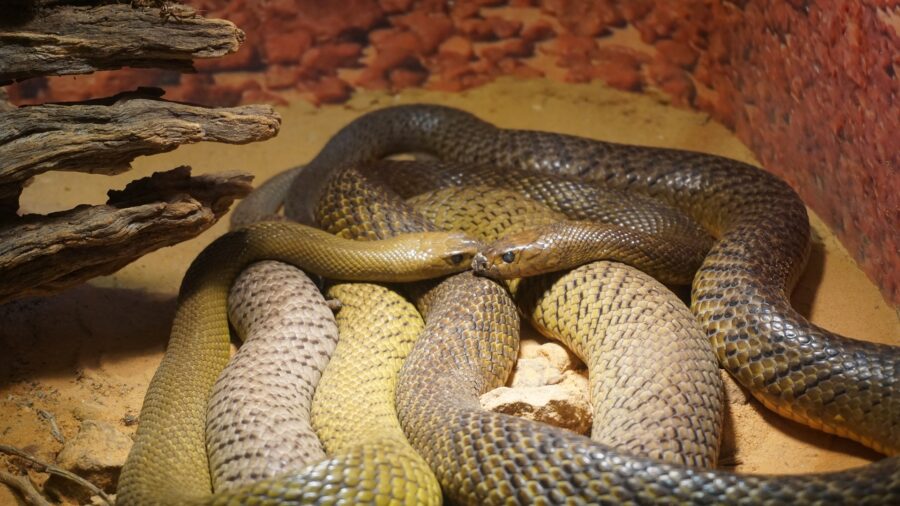South American Penis Snakes Have Been Discovered In The United States
In news really no one wants to hear, it appears that South American penis snakes are now slithering around in parts of the United States

You’ve heard of Florida Man, but what about Florida penis snakes? It seems like Florida may be having an invasive species problem, as caecilians have been found in the C-4 canal in South Florida. Due to the fact these creatures are native to Colombia and Venezuela, their appearance in North American waters technically makes them invasive.
Caecilians are a species of legless amphibians. Their appearance has earned them the nickname of “rubber eels” or sometimes, “penis snakes”. Regardless of what you call them, they’re relatively harmless creatures that can grow anywhere from a few inches to five feet in length. The specimen that was caught in South Florida was two feet. These animals thrive in warm and shallow waters, so Florida’s canals do seem like a suitable habitat for them. Caecilians are relatively mysterious animals, with many of the species preferring to live in muddy tunnels instead of water. Check out what these penis snakes look like:
We actually don’t know too much about these penis snakes due to their hidden lifestyle. It’s definitely one of the amphibian types that are not as well-known by the general public, leading many to mistake them for snakes when they first see them. Although they do have sharp teeth, these animals aren’t dangerous to humans. Of course, you might not want to eat them (not that you were planning to) because some species can secrete toxins.
Though these penis snakes could technically be considered invasive because they’re not native to Florida, it’s not necessarily concerning for the ecosystem. Coleman Sheehy from Florida Museum’s Herpetology Collection wrote in a report that they would likely eat smaller animals and be eaten by bigger ones, mentioning that they “don’t appear to be serious predators.” This would make them a non-native species, rather than truly invasive. To be considered invasive, a species would need to cause harm to its environment and be overpopulated. As far as invasive species go, Florida already has its hands full, so it’s a good thing they don’t have to add penis snakes to their list of animals to worry about.
Though penis snakes aren’t a big deal, Florida has an entire list of “most wanted species,” being an easy entry point into the country for many different invasive animals. Florida also has a hospitable, varied environment that makes it easy for these species to thrive. Some of Florida’s most problematic invasive species are feral hogs, Burmese pythons, lionfish, hydrilla, lygodium, and fire ants. Feral hogs cause millions of dollars worth of agricultural damage every year, Burmese pythons eat native birds and plants, lionfish are dangerous to humans, hydrilla & lygodium are plants that suffocate other flora and fauna, and fire ants attack birds and sea turtles. The list is long folks.
Clearly, another destructive invasive species is the last thing that Florida needs right now. Fortunately, it looks like the caecilians will just be another addition to Florida’s diverse and varied wildlife. Maybe next time you visit Florida you can check out Disney World, hit the beach, and see some penis snakes. How could a vacation get better than that?












